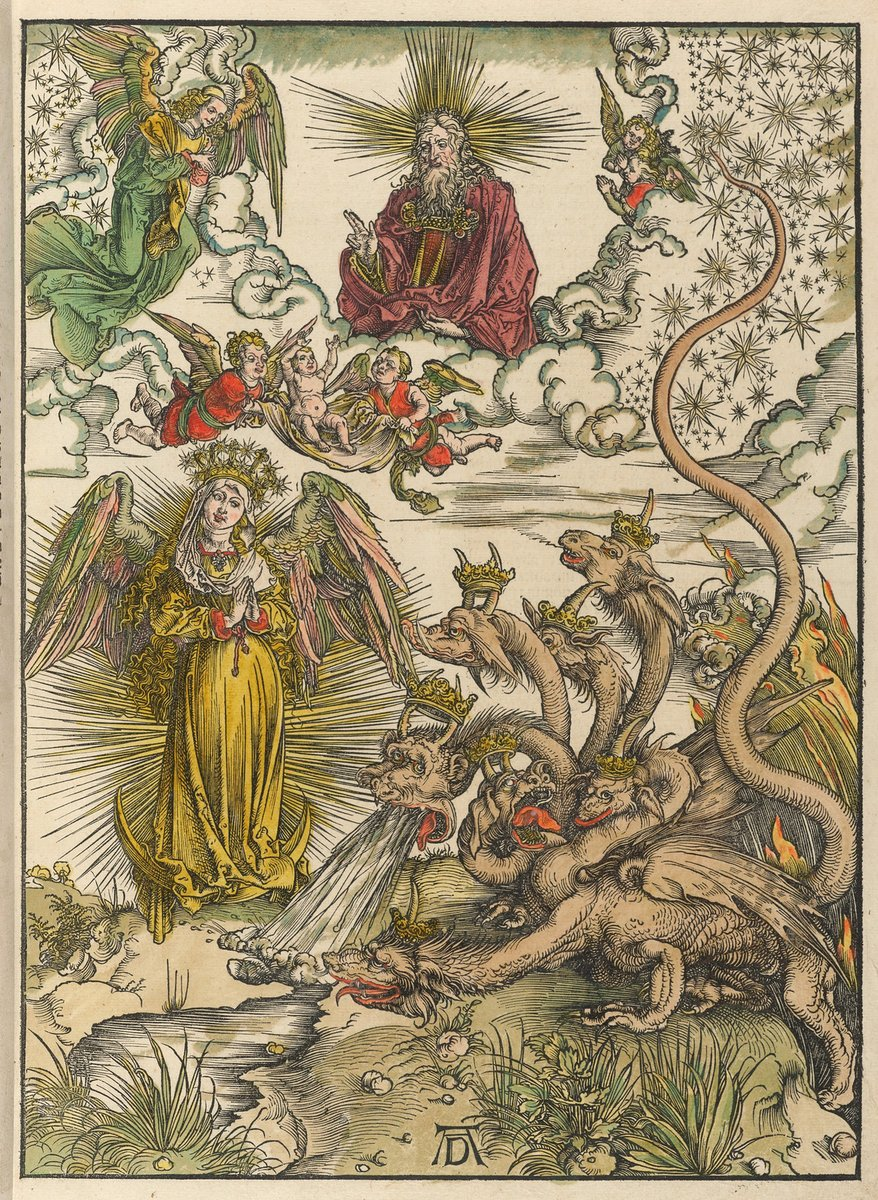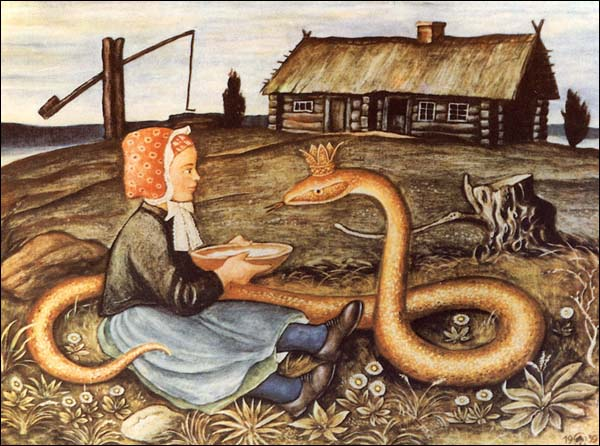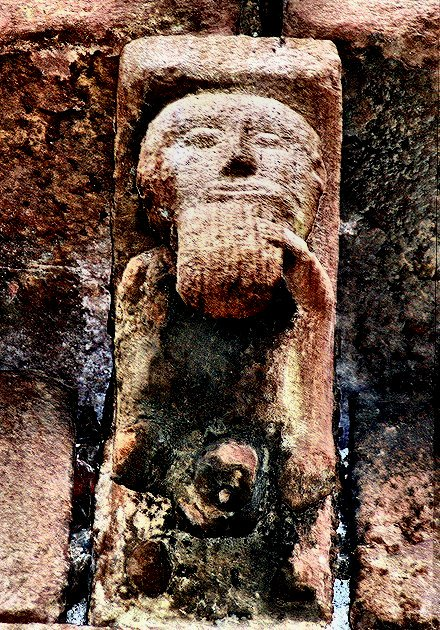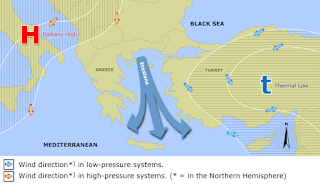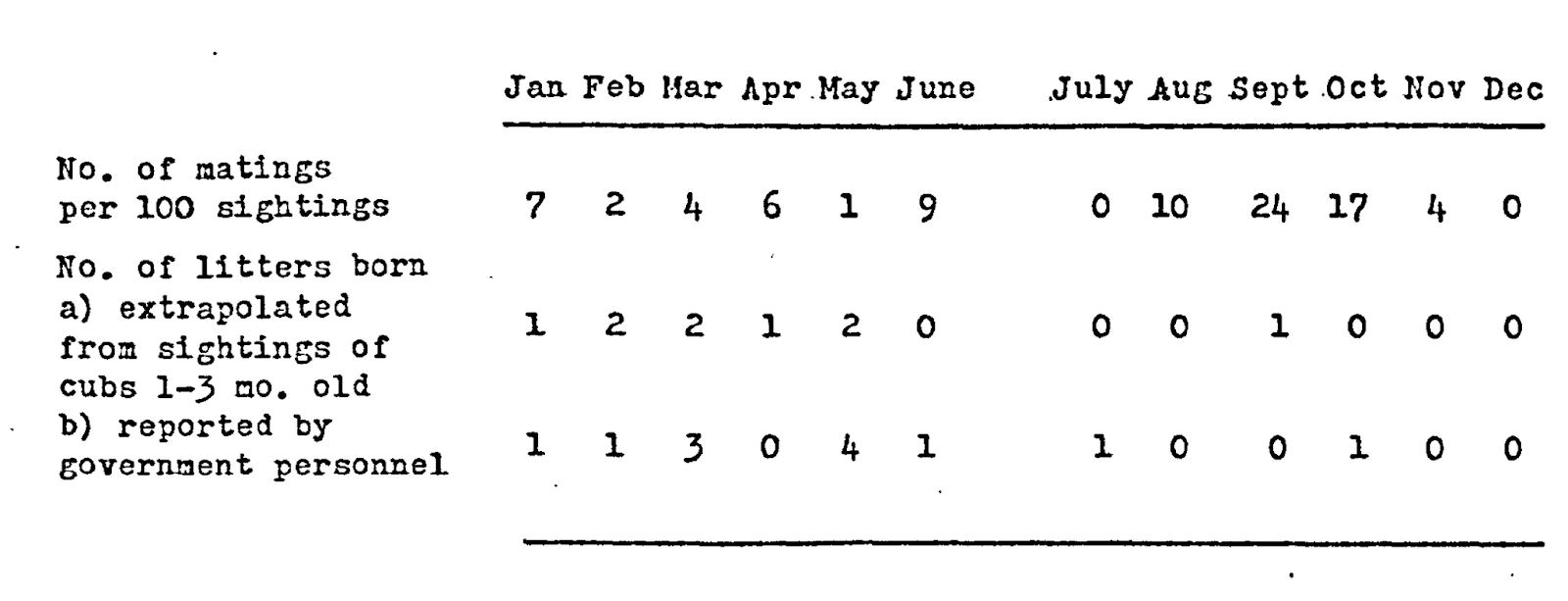Marble Throne of Apollo, Roman, late 1st c. AD. Currently in the Los Angeles County Museum of Art.
Whoever made this, knew who Apollo really was and wanted to show Apollo in his true shape (serpent, dragon), sitting on his throne. Let me explain:
Official description of the throne: "Despite its elaborate decoration, the artfully decorated legs terminating in lion's paw feet...[this throne] could hardly have been sat upon..."
Of course. Apollo is already depicted sitting on it. In a shape of a serpent/dragon...
"...A snake weaves its way in and out of an archer's bow, below which is a quiver full of arrows...The bow and quiver are associated with the god Apollo and the snake might refer to the fearful serpent Python, guardian of the oracle at Delphi, which Apollo slew in his youth..."
Ancient traditions disagreed on why Apollo fought and killed Python. There are three main versions:
1. Apollo’s wanted to take over Delphi'c oracle, and since Python was the guardian of the oracle, Apollo needed to kill him first.
2. Python had been terrorizing Delphi, and Apollo wanted to free the region from the cruel monster.
3. Hera, who was jealous that her husband Zeus had slept with Leto, sent Python after pregnant Leto to stop her from giving birth to Apollo and Artemis.
As soon as Apollo was born, he pursued Python as revenge for chasing his mother, cought with it in Delphi and killed him. Which is why this 400 BC silver stater from Croto, Italy, depicts baby/infant Apollo shooting the Python across the Delphic oracle's tripod.
This killing of Python is the most important event in Apollo's myth. So maybe the artist here just used "mythological attributes" of Apollo's myth to indicate that this is Apollo's throne. No one would depict Apollo as a snake/dragon...Right?
Enters Suetonius 69 –122 AD, a Roman historian who is mainly remembered as the author of "The Life of the Caesars", in which he describes the conception of Augustus, which he said, he had read it in the books of Asclepias of Mendes entitled Theologumena...
And apparently this is how it happened, I swear: "When Atia [Augustus's mother] had come in the middle of the night to the solemn service of Apollo, she had her litter [bed] set down in the temple and fell asleep. On a sudden a serpent glided up to her and shortly went away..."
"...When she awoke, she purified herself, as if after the embraces of her husband, and at once there appeared on her body a mark in colours like a serpent, and she could never get rid of it; so that presently she ceased ever to go to the public baths..."
"...In [time] Augustus was born and was...regarded as the son of Apollo [!!!]. Atia before she gave him birth, dreamed that her vitals were borne up to the stars and spread over the whole [world], while Octavius (Augustus's father) dreamed that the sun rose from Atia's womb..."🙂
Chalcedonic gemstone. Late Republic, ca. 50—40 BC. From "Peace bringers, serpents and providence: exemplifying the Apollonian propaganda of Peace in Ancient Rome of the Augustan Age"
Wow. Now why is the snake in this story interpreted as Apollo? This makes really no sense in Greek or Roman religion. Apollo is only ever associated with one snake/dragon, Python, the original owner and guardian of the Delphic oracle. Whom Apollo killed and replaced [important!].
Why is this important? Remember how in Slavic mythology Sun God Jarilo, whose name means "Brightly burning one" but also "The Raging one", The Dragon, became St George, The Dragon Killer?
In Serbian Orthodox church tradition, the beginning and the end of the "Time of Dragons", the hot sunny half of the year, is marked (guarded) by Two Georges, Summer and Winter St Georg (e's day)...I talked about this in my post "Two Georges"...
I also talked the relationship between Jarilo and St George in my post "St George of the sprouting crown" about Green George and why St George is wearing a Sprouting Crown on this 19th c. depiction from Ethiopia.
And remember how Slavs, regardless, just continued to follow the same old beliefs, practice the same old rituals, make the same old sacrifices to the Dragon Killer, which they once made to propitiate the Dragon...
There is a Serbian belief that "old snakes grow wings, after which they fly away to live in lakes and waters"...Just like a Dragon who lived in a lake and to whom Serbs sacrificed rams on St George's day during droughts...
I talked about it in my post "Letnitsa treasure"
Well it seems that Apollo killing Python and taking over his oracle is another example of the same magic switch in which The Dragon (snake) becomes The Dragon Killer (Apollo) with everything else staying pretty much the same.
I believe that this is as explicit a statement as you would get in mythology that The Sun = The Serpent = The Dragon...
Who knew knew...And understood that the snake in Apollo's temple is Apollo...Or that the snake on Apollo's throne is Apollo...
But of course, you all know that. At least those of you who have been following me for a while and have been reading my scribbles about animal calendar markers...
Snake is a pure solar animal. It is in our world when sun is here (day, hot half of the year) and it is in the underworld when sun is there (night, cold half of the year)...I talked about it in these posts: "The chthonic animal", "Enemy of the sun", "Beotian solar pyxis", "Mystery seal", "Snake god from Hatra", "Goat and snake from Kortik tepe", "Pegasus and Chimera"...
For instance, this is 3rd millennium BC, Bactrian seal depicting the sun god (see heat rays emanating from his shoulders) holding snakes, symbols of sun's heat...See snakes, Solar animals number one, the symbols of sun's heat...I talked about it in my post "Nude winged hero dominating snakes"...
And the destructive sun of the late (old) summer is dragon (old snake)...
I talked about this in my post "Scaring off the dragon":
The main worry of the Bulgarian farmers at the beginning of the summer (Apr/May) is drought. Traditionally people thought that drought was caused by a winged dragon (zmey), who "stole and locked up" the waters...
BTW, the Slavic folklore (remnants of the old mythologies) is where I found the key that helped me to understand the link between snakes/dragons and the sun gods. But this link is found everywhere...For instance, I talked about this in my post "Apocalypse" about the identity of the mysterious woman of apocalypse.
Woman of the Apocalypse, Albrecht Dürer, 1511.
For our story about Apollo and the serpent throne "with lion feet", it is important that we understand that in Mesopotamia the dragon was seen as a lion with snake heads.
In Mesopotamia, summer lasted seven (hot) months...Which is why local dragon (dragon = symbol of summer), had seven snake heads (snake = symbols of sun's heat)...Oh, and look, we also have dragon killer(s) and the princess 🙂 I talked about this in my post "Seven headed dragon"...
Or as a lion man...
Nergal, the deified destructive "burning" sun, was depicted as a lion man, because Jul/Aug, Leo, is the hottest and driest part of the year in Mesopotamia...
Talked abut him in my post "Winged superhuman hero"...
In Greece, the "terrible" sun, Shamash as Nergal, became Apollo. The "terrible" sun god Apollo...
In the "Hymn to Delian Apollo", we read:
"As he [Apollo] goes through the house of Zeus, the gods tremble before him and all spring up from their seats when he draws near, as he bends his bright bow".
I explained why Apollo was so terrible, and why everyone was so shitless when he was around, in my post "Lions of Delos" about the lions from the 600 BC Temple of Apollo from Delos.
This will also explain why it was Heracles, the Lion Man, who tried to steal the Delphi Oracle tripod from Apollo. 🙂 But let's not digress...Will write about this soonish 🙂
So, Apollo as snake/dragon sitting on his lion throne makes more sense now?
Three interesting things for the end:
1. Did you bother reading my post "Apollo and Dolphins", in which I explain why Apollo took shape of a dolphin when he was establishing his temple in Delphi?
Particularly the part at the end where I talk about the fact that both δελφῑ́ς (dolphin) and Δελφοί (Delphi), come from the same Proto-Indo-European root *gʷelbʰ meaning womb...δελφῑ́ς meaning "fish with womb" and Δελφοί meaning "womb of the mother Gaia"? No?
This would explain the sun rising from Atia's womb, as indeed earth gives birth to sun every morning. This would also hint that maybe Delphi, where we find "the navel of the world (earth, Gaia)", could have been seen as the place where Gaia's womb was also located...
2. Did you know that in the earliest accounts, the snake/dragon that Apollo killed in Delphi was a female snake/dragon, apparently named Δελφύνη...
Makes sense that the snake that was the original Oracle of Delphi (the womb of the mother earth) would be called Delphine (the snake from the womb of the mother earth)...Gaia was said to be the mother of the snake Apollo killed in Delphi...
3. Speaking about snake as an oracle. Why would a snake be a good oracle. Cause, as I already said before snake is a pure solar animal. It is in our world when sun is here (day, hot half of the year) and it is in the underworld when sun is there (night, cold half of the year)...
And who is in the underworld? The dead of course. And it seems that in the past, it was a widespread belief that it is the dead that determine the faith of the living...I wrote about this a lot...
Mesopotamians and Hittites
I talked about "thirsty dead" in my post "Care of the dead" about Hittite and Sumerian belief that the dead are linked to rain and grain fertility...And if you forget to respect the sacred bond with the dead...
Egyptians
I talked about the link between the dead and the Nile flood and the grain in my post "Braided beard" of Osiris...
Romans
Pic: Do cup and ring marks actually depict rain drops falling on water surface?
Post "Lapis Manalis" about a sacred Roman stone "Lapis Manalis", which proves that Romans too saw direct link between the dead, the rain and the grain...
Greeks
The life giving power of the dead ancestors was appropriated by Pluto (Hades), the giver of wealth, for himself. And this is why Hades and Persephone are depicted sitting on their throne in the land of the dead, with sheafs of wheat and flowers...I talked about this in my post "Pluto"...
Slavs
Diduch (grandfather), symbolic representation of the ancestral spirit which governs the lives of the living.
From Central European Slavic mythology / folklore. More in my post "Diduch"...
So if ancestors determined your faith, then a snake that spends every night in the land of the dead, where it follows the sun, can hear what the dead are planning for their descendants (the dead like to think out loud 🙂), and can then tell the living all they need to know...
Interestingly, Slavs and Balts saw a house snake as the protector of the house and the family. That comes directly from the belief that the house snake contains the spirit of the first ancestor that died in the house. In Belarus, when storytellers want to emphasise that something happened long time ago, they would say "in the old days, when people kept snakes in their houses"...From my post "House snake" about house snakes from Slavic folklore...
Considering that snakes follow the sun to the land of the dead, the sun (god), Apollo, the true ruler of the land of the dead (Ra, Shamash, Mot, Apollo (Nergal was the equivalent of Hades)?), knows everything the dead intend to do...And why he became the god of prophecies...
Interestingly, in the traditions associated with Apollo, the oracle gave prophecies during the nine warmest months of each year. During winter months, Apollo was said to have deserted his temple...
As I said: snakes are in our world when sun is here (day, hot half of the year) and it is in the underworld when sun is there (night, cold half of the year)...
And so, when it comes to the gift of prophecy, we again have the direct link between snakes and Apollo...
Just like in the story of Cassandra who was given the gift of prophecy by Apollo, "either directly or through a snake that kissed her lips in Apollo's temple"...I talked about it in my post "Cassandra"...
So...Interesting? For the end end. You know how Augustus, the greatest Roman emperor was conceived by a snake/dragon?
Poor poor Philip of Macedon...The Egyptian magician Nectanebo, the true father of Alexander, transformed into a dragon, licking pregnant Philip's wife Olympia, while Philip, shitting himself from fear, watches on.
From my post "Alexander romance"...
In Serbian folklore boys conceived by dragons were also always destined for great things...Will write about this at some stage...
That's it. To read more about ancient animal and plant calendar markers, start here…Then check my twitter threads I still didn't convert to blog post...I am way way behind...









